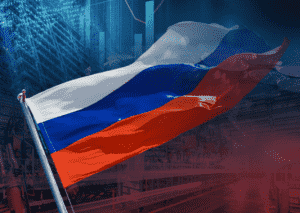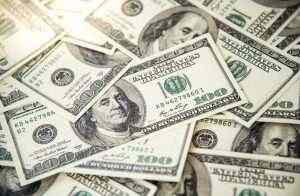algorithmic trading strategies: Ultimate List of Automated Trading Strategies You Should Know Part 1 by Alpaca Automation Generation

![]()
Others may operate on a much longer horizon, carrying a large and diverse portfolio of securities long and short indefinitely. Market making used to be done primarily by humans, who worked as floor traders in the pits, but now it’s almost entirely performed by machines. As exchanges have become more and more electronic, the strategy market makers employ has naturally required automation. You will need access to historical price data and may benefit from an indicator calculator library such as TA-lib. Virtually every trading framework library, including pyalgotrade, backtrader, and pylivetrader, can support these types of strategies. Though its development may have been prompted by decreasing trade sizes caused by decimalization, algorithmic trading has reduced trade sizes further.
The implementation of a trading algorithm is the final step in creating a forex algorithmic trading strategy. Prior to actually implementing the algorithm thorough back testing should be employed to ensure the probability of profitability. Remember, once you start up an algorithmic trading system it will keep running whether the trades are winning or losing. The challenge then is to translate the imagined strategy into a computerized program that can successfully trade the forex market. There are a number of mathematical models, such as the delta-neutral trading strategy, that are proven to be effective in trading with multiple positions that offset positive and negative deltas.
![]()
Steps taken to reduce the chance of over-optimization can include modifying the inputs +/- 10%, shmooing the inputs in large steps, running Monte Carlo simulations and ensuring slippage and commission is accounted for. When the current market price is less than the average price, the stock is considered attractive for purchase, with the expectation that the price will rise. When the current market price is above the average price, the market price is expected to fall.
Beyond the Usual Trading Algorithms
The data is analyzed at the application side, where trading strategies are fed from the user and can be viewed on the GUI. Once the order is generated, it is sent to the order management system , which in turn transmits it to the exchange. Strategies designed to generate alpha are considered market timing strategies. These types of strategies are designed using a methodology that includes backtesting, forward testing and live testing. Market timing algorithms will typically use technical indicators such as moving averages but can also include pattern recognition logic implemented using finite-state machines.
Systematic trading includes both high frequency trading and slower types of investment such as systematic trend following. We will explain how an algorithmic trading strategy is built, step-by-step. A more academic way to explain statistical arbitrage is to distribute the risk between a thousand to a few million trades in a very short holding span with the expectation of gaining profit from the law of large numbers. Statistical arbitrage Algorithms are based on the mean reversion hypothesis, mostly as a pair.

In 2006, at the London Stock Exchange, over 40% of all orders were entered by algorithmic traders, with 60% predicted for 2007. American markets and European markets generally have a higher proportion of algorithmic trades than other markets, and estimates for 2008 range as high as an 80% proportion in some markets. Foreign exchange markets also have active algorithmic trading, measured at about 80% of orders in 2016 (up from about 25% of orders in 2006).
As an arbitrage consists of at least two trades, the metaphor is of putting on a pair of pants, one leg at a time. In the U.S., spending on computers and software in the financial industry increased to $26.4 billion in 2005. In response, there also have been increasing academic or industrial activities devoted to the control side of algorithmic trading. While many experts laud the benefits of innovation in computerized algorithmic trading, other analysts have expressed concern with specific aspects of computerized trading. Forward testing the algorithm is the next stage and involves running the algorithm through an out of sample data set to ensure the algorithm performs within backtested expectations. A special class of these algorithms attempts to detect algorithmic or iceberg orders on the other side (i.e. if you are trying to buy, the algorithm will try to detect orders for the sell side).
Any projections, estimates, forecasts, targets, prospects, and/or opinions expressed in these materials are subject to change without notice and may differ or be contrary to opinions expressed by others. Optimize Intraday Momentum Strategy 25 min read ›There are no standard strategies which will make you a lot of money. Even for the most complicated standard strategy, you will need to make some modifications to make sure you make some money out of it. If it’s standard then it’s standard for a reason which means that it will not be generating any returns. Each goal presents you with an organized set of such informative courses that should serve your purpose. QuantInsti’s learning track on the web page offers you with courses in descending order starting from basic and ending with advanced knowledge for each goal.
Examples include Chameleon , Stealth , Sniper and Guerilla (developed by Credit Suisse). These implementations adopted practices from the investing approaches of arbitrage, statistical arbitrage, trend following, and mean reversion. As more electronic markets opened, other algorithmic trading strategies were introduced. These strategies are more easily implemented by computers, as they can react rapidly to price changes and observe several markets simultaneously. The financial landscape was changed again with the emergence of electronic communication networks in the 1990s, which allowed for trading of stock and currencies outside of traditional exchanges. With the rise of fully electronic markets came the introduction of program trading, which is defined by the New York Stock Exchange as an order to buy or sell 15 or more stocks valued at over US$1 million total.
In 2005, the Regulation National Market System was put in place by the SEC to strengthen the equity market. Check out if your query about algorithmic trading strategies exists over there, or feel free to reach out to us here and we’d be glad to help you. Besides these questions, we have covered a lot many more questions about algorithmic trading strategies in this article. Here are some of the most commonly asked questions about algorithmic trading strategies which we came across during our Ask Me Anything session on Algorithmic Trading. Next, we will go through the step-by-step procedure to build an algorithmic trading strategy. In machine learning based trading, one of the applications is to predict the range for very short-term price movements at a certain confidence interval.
Other issues include the technical problem of latency or the delay in getting quotes to traders, security and the possibility of a complete system breakdown leading to a market crash. Live testing is the final stage of development and requires the developer to compare actual live trades with both the backtested and forward tested models. Metrics compared include percent profitable, profit factor, maximum drawdown and average gain per trade.
Algorithms (Algos)
While such registration does not imply a certain level of skill, it does require us to follow federal regulations that protect you, the investor. By law, we must provide investment advice that is in the best interest of our client. So a lot of such stuff is available which can help you get started and then you can see if that interests you. The good part is that you mentioned that you are retired which means more time at your hand that can be utilized but it is also important to ensure that it is something that actually appeals to you. Furthermore, there is a well-designed platform for exercising your knowledge, so as to use the same appropriately in the live market. Sharpe Ratio – Risk-adjusted returns, i.e. excess returns (over risk-free rate) per unit volatility or total risk.
The defined sets of instructions are based on timing, price, quantity, or any mathematical model. Apart from profit opportunities for the trader, algo-trading renders markets more liquid and trading more systematic by ruling out the impact of human emotions on trading activities. Also, there can be a difference between the trades generated by the trading strategy and the actual results from the automated trading systems. Automated trading systems should be monitored at all times to prevent mechanical failures. Some traders may enter on a price breakout from a certain price resistance level, while others may wait to see a chart pattern form to determine the first bottom before going higher. Day trading often relies on analyzing the stock’s price chart and fine-tuning the algorithm to capture the price action can be tricky.
Mathematical Model-based Strategies
Quote stuffing is a tactic employed by malicious traders that involves quickly entering and withdrawing large quantities of orders in an attempt to flood the market, thereby gaining an advantage over slower market participants. The rapidly placed and canceled orders cause market data feeds that ordinary investors rely on to delay price quotes while the stuffing is occurring. HFT firms benefit from proprietary, higher-capacity feeds and the most capable, lowest latency infrastructure. Researchers showed high-frequency traders are able to profit by the artificially induced latencies and arbitrage opportunities that result from quote stuffing. One strategy that some traders have employed, which has been proscribed yet likely continues, is called spoofing.
Algorithmic trading is also executed based on trading volume (volume-weighted average price) or the passage of time (time-weighted average price). In trading, every second count and the speed of algorithmic trading makes it a favorable option for investing. Computers respond immediately to changing market conditions and help generate orders as soon as the criteria are met, much faster than any person can recognize a change in the market and manually enter trading orders. It’s a trading strategy that dictates buying an asset when its price trend rises and selling it when its price trend decreases for a specified period.
Although losses are part of trading, human traders may get discouraged after incurring two or more consecutive losses and fail to move to the next trade. By falling out midway through the process, the trader destroys any chances of winning in other rounds of trading. Automated trading helps to achieve consistency, trade according to the plan, and increase chances of winning. Through automated trading, traders have an easy time sticking to the plan. One of the benefits of algorithm trading is the ability to minimize emotions throughout the trading process since trades are limited to a set of predefined instructions.
If market making is the strategy that makes use of the bid-ask spread, statistical arbitrage seeks to profit from the statistical mispricing of one or more assets based on the expected value of these assets. An algorithm is, basically, a set of instructions or rules for making the computer take a step on behalf of the programmer . The programmer, in the trading domain, is the trader having knowledge of at least one of the computer programming languages known as C, C++, Java, Python etc.). Stock trading involves buying and selling shares of publicly traded companies. It typically happens in the United States on exchanges like the New York Stock Exchange or the Nasdaq stock market. Algorithmic trading can provide a more systematic and disciplined approach to trading, which can help traders to identify and execute trades more efficiently than a human trader could.
In other words, deviations from the average price are expected to revert to the average. Going by the number of courses available online on algorithmic trading, there are several on display, but finding the apt one for your individual requirement is most important. Now, it is obviously in your best interest to learn from a group of market experts. To make this happen, your goal and course offered should be in complete synchronization so as to not waste even an iota of time on unnecessary information. A large number of funds rely on computer models built by data scientists and quants but they’re usually static, i.e. they don’t change with the market. Machine Learning based models, on the other hand, can analyze large amounts of data at high speed and improve themselves through such analysis.
Algorithmic trading strategies are devised by a trader experienced in financial markets who also have the knowledge of coding with the computer languages such as Python, C, C++, Java etc. Backtesting for algorithmic trading strategies involves a huge amount of data, especially if you are going to use tick-by-tick data. Blueshift is a free platform which allows you to perform backtesting, investment research and algorithmic trading, using 10+ years of data.
